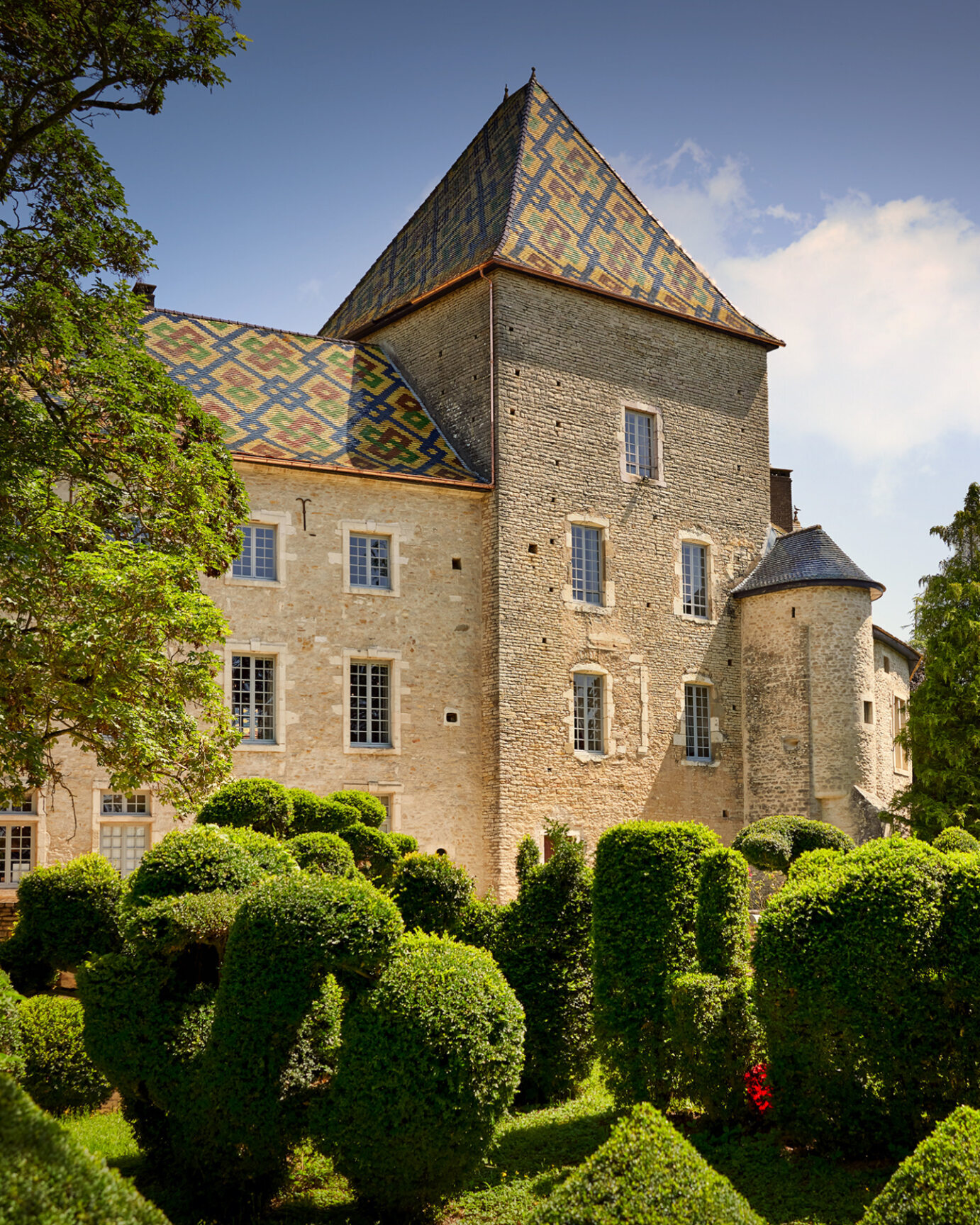Discover 20 must-visit wine estates in Burgundy for Pinot Noir and Chardonnay tastings, combining tradition, terroir and excellence.
Burgundy is one of the most prestigious wine regions in the world, renowned for its delicate Pinot Noir and mineral Chardonnay. Between the villages of the Côte de Nuits, the Côte de Beaune and the Chablis region, the Burgundy vineyards are structured into hundreds of “climats,” each expressing its own unique identity. For wine lovers, visiting these estates offers much more than just a tasting: it is an immersion in a culture, a terroir, and expertise passed down for centuries. This guide presents 20 must-see estates and cellars in Burgundy, selected for the quality of their wines, the experience they offer visitors and the richness of their heritage. Spread throughout the region, these places welcome novices and enthusiasts alike for a variety of authentic discoveries.
1. Bouchard Père & Fils – Beaune
Located in the heart of Beaune in a former 15th-century royal castle, Bouchard Père & Fils is a key figure in Burgundy’s wine-growing heritage. Founded in 1731, the house owns one of the largest estates in Burgundy with 130 hectares, including 12 classified as Grands Crus. The tour allows visitors to discover a unique collection of medieval cellars, housing old vintages stored in ideal conditions. The guided tour immerses visitors in the history of wine through vaulted rooms, century-old barrels, and historic bottles. Tastings focus on prestigious appellations such as Corton-Charlemagne, Bonnes-Mares and Beaune Grèves Vigne de l’Enfant Jésus. The passionate and knowledgeable staff accompany each step with informative explanations about the climates, winemaking methods and characteristics of the terroirs. Bouchard Père & Fils offers a complete immersion in Burgundy’s excellence, combining heritage, expertise, and exceptional wines. Reservations are recommended, especially during high season.
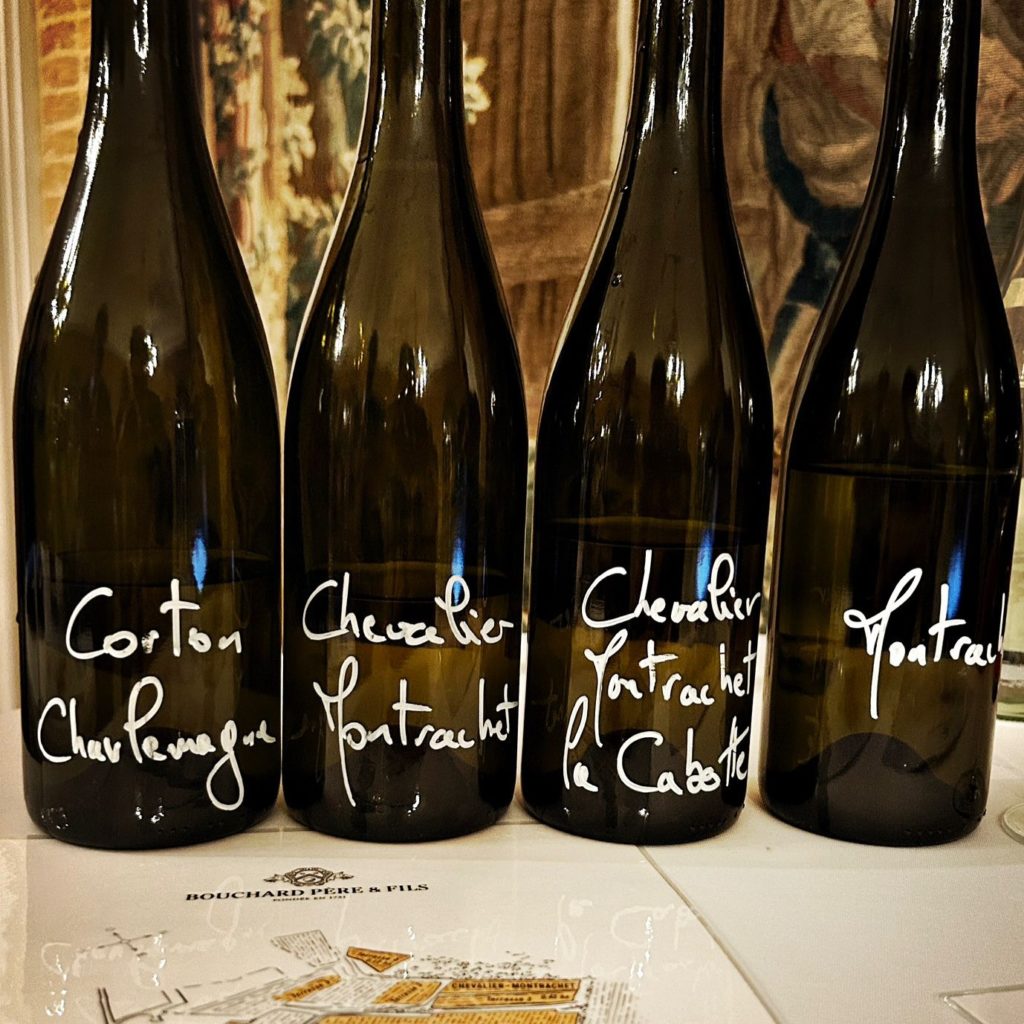
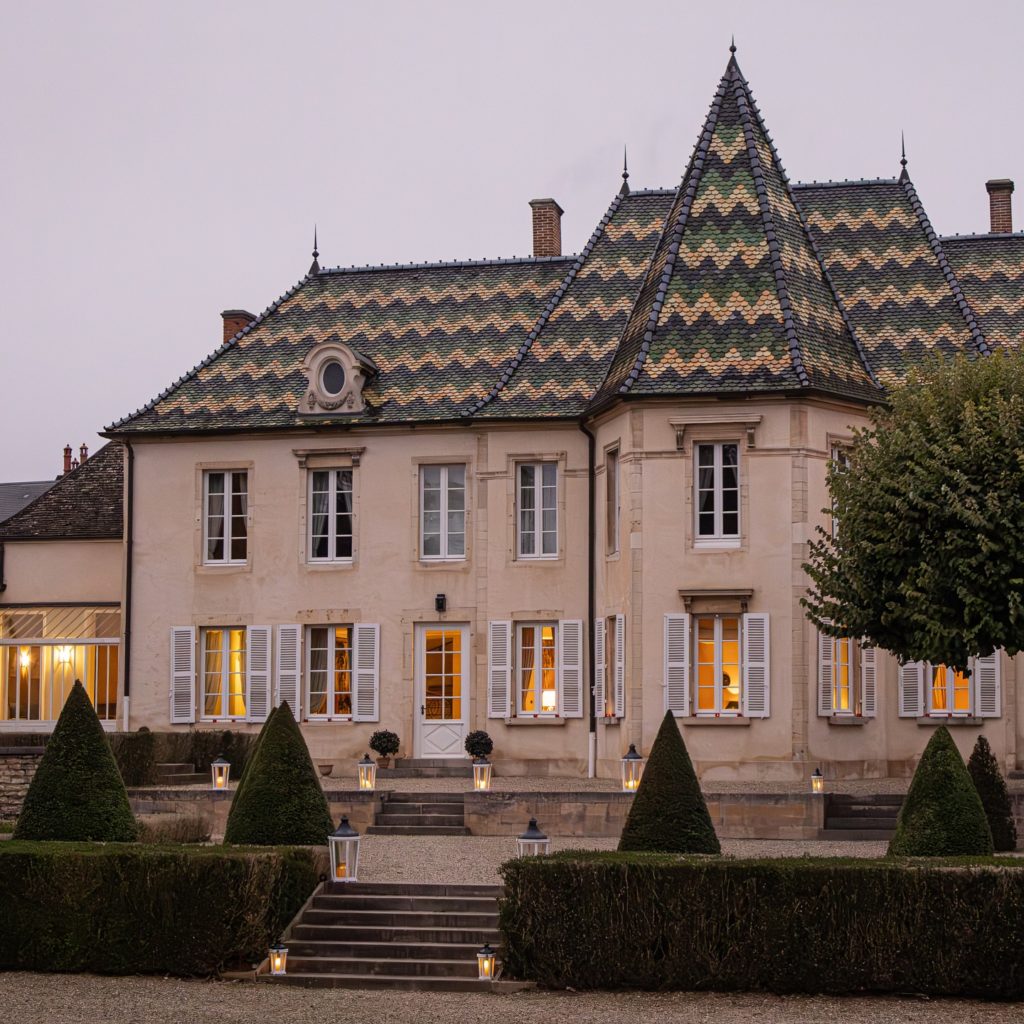
2. Château de Marsannay – Marsannay-la-Côte
At the northern entrance to the Côte de Nuits, Château de Marsannay is an excellent starting point for exploring the Route des Grands Crus. This 40-hectare estate is the leading producer of the Marsannay appellation, which is distinguished by its expressive reds and rare rosés. The château offers a complete wine tourism experience, combining educational tours of the cellars, walks through the vineyards, and guided tastings. The staff take pride in explaining the specific characteristics of the Côte de Nuits, with concrete examples from the estate’s vineyards such as Clos de Jeu and Les Longeroies. Visitors appreciate the modern facilities combined with the classic charm of the building. Tastings include 5 to 8 wines, ranging from regional appellations to more prestigious crus, sometimes accompanied by food pairings. The experience is enriching for both amateurs and connoisseurs alike. Easily accessible from Dijon, the château has a car park and welcomes visitors every day. Reservations are recommended, especially for private guided tours.
3. Château de Meursault – Meursault
The Château de Meursault is one of the most iconic wine-growing sites in the Côte de Beaune. This historic estate dates back to the 11th century, and its 12th-century vaulted cellars stretch for over 800 meters, providing an exceptional setting for a visit. The estate covers approximately 65 hectares spread over 18 appellations, including renowned crus such as Meursault Charmes and Pommard Clos des Epenots. The tour includes a self-guided or guided walk through the monumental cellars, punctuated by explanations about the history of the château, its Cistercian architecture, and winemaking methods. The tastings are generous: up to 12 wines can be served depending on the option chosen, with a focus on the rich and elegant Chardonnays of Meursault. In summer, the French gardens and terraces offer a peaceful setting to extend your visit. Cultural events, exhibitions, and concerts are sometimes organized here. Open every day, the château is easily accessible from Beaune.
Reservations are strongly recommended, especially for guided tastings.
4. Château de Pommard – Pommard
Founded in 1726, Château de Pommard is one of the most prestigious estates in the Côte de Beaune. Under the management of the Carabello-Baum family since 2014, the estate combines winemaking tradition with a modern approach to education. The Clos Marey-Monge vineyard, the château’s historic monopoly, covers 20 hectares and produces structured Pinot Noir wines, renowned for their aging potential. The tour begins with an immersion in biodynamic farming methods, followed by a walk through the vineyards. Tastings are led by WSET-trained sommeliers, ensuring a professional and accessible approach. Depending on the option chosen, you can taste between 5 and 9 wines, often including older vintages or limited editions. Some experiences include food and wine pairings, carriage rides, or hot air balloon flights over the vineyard. The site also offers wine tasting courses. Open all year round, with reservations required, Château de Pommard is a model of immersive and educational viticulture in a refined architectural setting.
5. Château de Saint-Aubin – Saint-Aubin
Located at the top of the village of Saint-Aubin, this discreet château overlooks the vine-covered hills between Chassagne-Montrachet and Puligny-Montrachet. It offers an exceptional view of the surrounding climates in a peaceful atmosphere. The estate specializes in producing Chardonnay from lesser-known appellations that offer excellent value for money, such as Saint-Aubin Premier Cru En Remilly. The tour highlights Saint-Aubin’s growing role in the landscape of great Burgundy whites. The experience focuses on tasting, often accompanied by simple, local dishes in the estate’s panoramic restaurant, housed in an old vaulted room. The emphasis is on the elegance and minerality of the whites, with clear explanations of the influence of the limestone soil and high altitudes. The welcome is warm and personalized. The estate is open Tuesday through Saturday, with packages including tours, meals, and tastings. It is an ideal stop for white wine lovers looking to explore beyond the most well-known appellations.
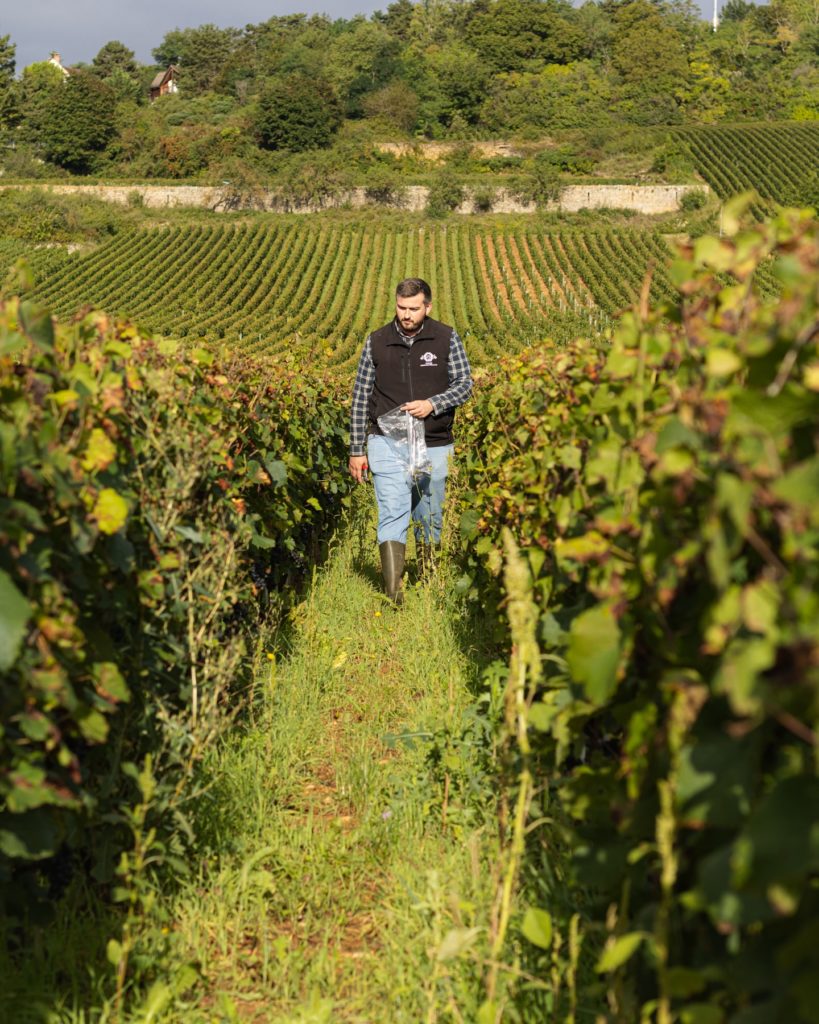
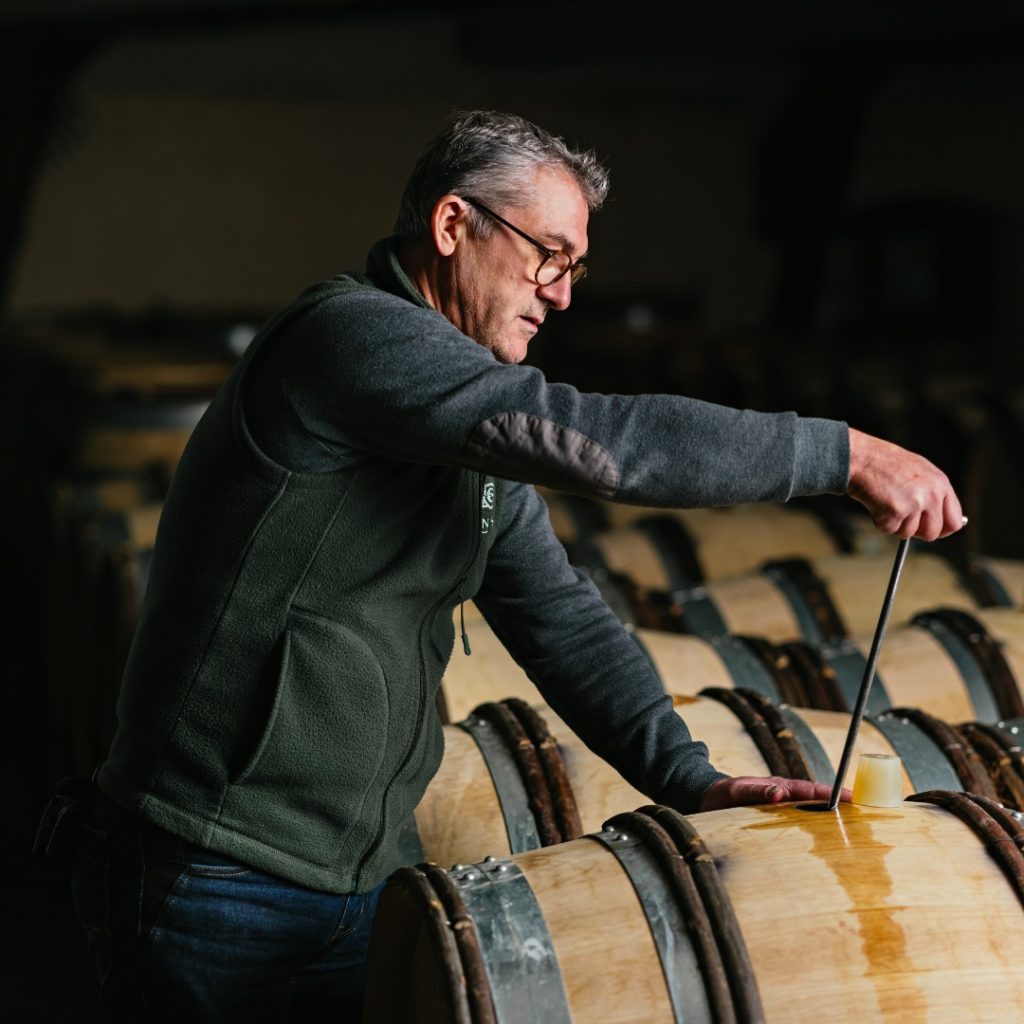
6. Château Philippe le Hardi – Santenay
Château Philippe le Hardi, formerly owned by the Duke of Burgundy Philippe le Hardi, is located in Santenay, at the southern end of the Côte de Beaune. This historic estate is one of the largest in Burgundy, with nearly 100 hectares spread between the Côte de Beaune, the Côte de Nuits, and the Côte Chalonnaise. The majestic and well-preserved château offers guided tours combining heritage, sustainable viticulture, and discovery of the vineyard. Visitors stroll through the gardens, the wine cellars, and the cellars before tasting a selection of wines representative of the climats cultivated by the estate: Mercurey, Santenay, Aloxe-Corton, and Rully. The staff explain the specific characteristics of each terroir and the winemaking choices made for the Pinot Noir and Chardonnay grape varieties. The château is also involved in organic conversion and the promotion of responsible winemaking practices. Open all year round, the site can be booked for private events and offers themed tastings by appointment.
7. Domaine Armelle et Bernard Rion – Vosne-Romanée
The Domaine Armelle et Bernard Rion, located in Vosne-Romanée, is a family estate renowned for the quality of its Pinot Noir and its commitment to tradition. The Rion family, now in its fifth generation, cultivates around ten hectares in prestigious appellations such as Nuits-Saint-Georges Premier Cru, Vosne-Romanée, and Clos de Vougeot Grand Cru. Visitors are offered an intimate experience, often led by a member of the family, in a warm and welcoming atmosphere. The estate also stands out for its truffle production: the owners have their own truffle grove and organize truffle hunting demonstrations with their truffle dogs. The visit combines wine heritage and local gastronomy. Tastings are personalized and feature 4 to 6 wines, often accompanied by explanations of the differences in soil, altitude, and aging. The estate is open by appointment only, which guarantees a quality experience away from the tourist trail. Ideal for enthusiasts looking for direct contact with the winemaker and authentic discoveries.
8. Domaine Chanzy – Bouzeron (Côte Chalonnaise)
Located in Bouzeron, in the Côte Chalonnaise, Domaine Chanzy is a benchmark for lovers of forgotten grape varieties and lesser-known terroirs. This estate particularly showcases Aligoté, the emblematic grape variety of the Bouzeron appellation, which can be discovered here in fine, tense and well-structured expressions. Chanzy also grows Pinot Noir and Chardonnay on several plots between Mercurey, Rully and Givry. The estate is renowned for its warm welcome, and tours are led by passionate guides or members of the technical team. The tour includes an immersion in the cellar and the caves, with detailed explanations of fermentation, barrel selection, and environmentally friendly vineyard management. The final tasting includes between 5 and 8 wines, offering a complete panorama of the Côte Chalonnaise. Open by appointment, the estate is a great alternative to the more popular sites of the Côte d’Or, ideal for curious visitors who want to get off the beaten track without sacrificing quality.
9. Domaine Charles & Fille – Nantoux
Domaine Charles & Fille is located in Nantoux, a small village in the Hautes-Côtes de Beaune. This family estate focuses on artisanal production with strong local roots. Run by the Charles family for several generations, it is now carried on by father and daughter. The estate cultivates around ten hectares spread over several appellations in the Hautes-Côtes, notably elegant Pinot Noir and expressive Chardonnay. The experience offered to visitors is distinguished by its simplicity and authenticity: a tour of the vineyards, a visit to the cellars, and a tasting in a traditional vaulted cellar. The estate also offers a table d’hôtes by reservation, where you can enjoy homemade Burgundy dishes paired with the estate’s wines. The atmosphere is rural, relaxed, and conducive to conversation. Far from mass tourism, it is an ideal destination for those who want to understand the daily life of independent winemakers while exploring the hills and altitudes of the Hautes-Côtes.
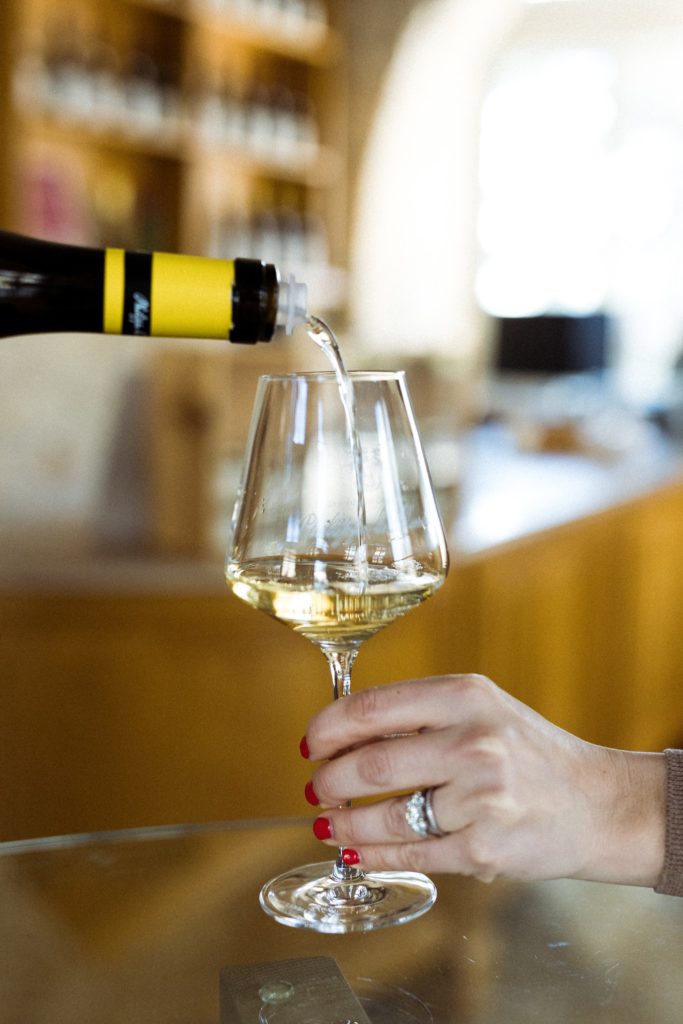
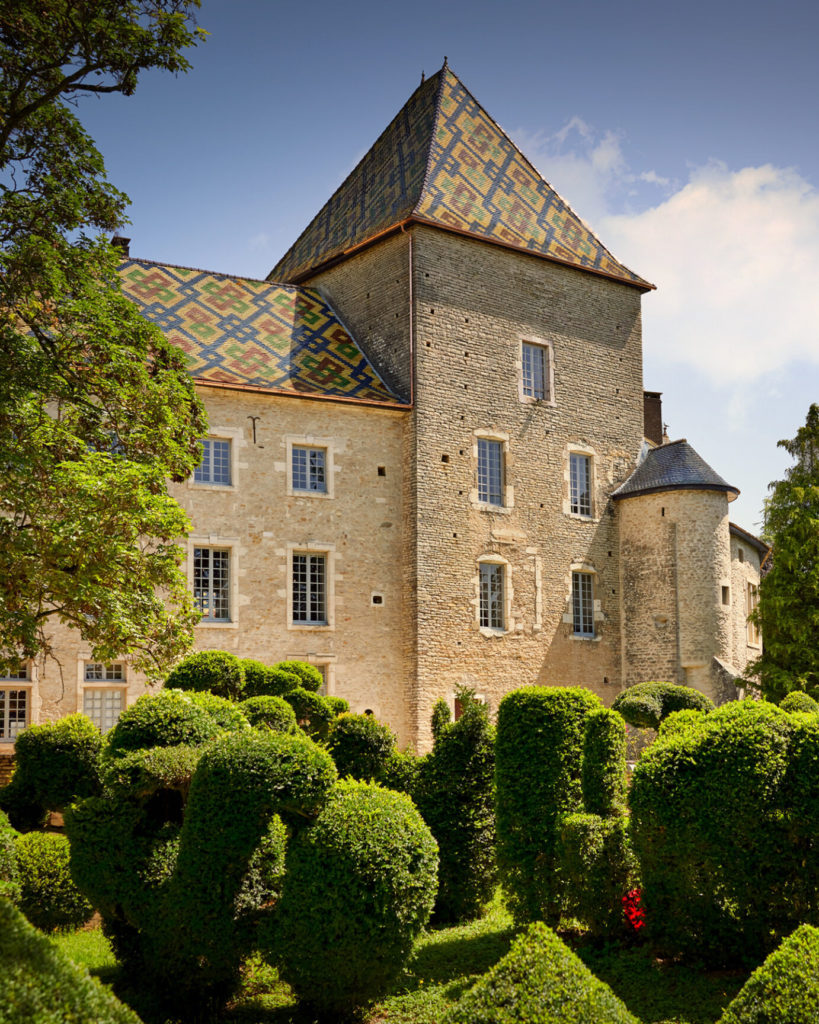
10. Domaine Chanson – Beaune
Founded in 1750, Domaine Chanson is one of the oldest estates still in operation in Beaune. Its headquarters are located in the Bastion de l’Oratoire, a former 15th-century military bastion converted into a monumental cellar. This unique building houses more than 10,000 bottles, stored in ideal aging conditions. The estate covers approximately 45 hectares, most of which are Premier Cru vineyards located on the slopes of Beaune, Savigny-lès-Beaune, and Pernand-Vergelesses. The tour includes a guided tour of the historic cellars, punctuated by explanations about the history of the place, the winemaking process, and the geological characteristics of the plots. The final tasting is varied, ranging from straightforward, mineral Chardonnays to fruity, structured Pinot Noirs. The experience is enriched by the passion and expertise of the guides, who know how to adapt their commentary to all levels of knowledge. The estate is open every day, with reservations recommended. It is an essential stop for enthusiasts wishing to discover Beaune from both a heritage and oenological perspective.
11. Domaine Comte Georges de Vogüé – Chambolle-Musigny
Domaine Comte Georges de Vogüé is a legendary name in the Côte de Nuits. Located in Chambolle-Musigny, it is renowned for its extremely refined wines, notably the Musigny Grand Cru, considered one of the most elegant in Burgundy. The estate also cultivates other prestigious climats such as Bonnes-Mares and Chambolle-Musigny Premier Cru Les Amoureuses. Visiting this estate is an exceptional experience: access is strictly reserved for professionals, importers, and knowledgeable collectors. Visits are private, often led by a member of the technical team or the family, in a sober, almost confidential setting. The estate cultivates exemplary rigor, both in the vineyard and in the cellar, with minimal intervention in the winemaking process to best express the personality of the terroir. The wines are aged for a long time, sometimes up to 18 months, before bottling. For enthusiasts who manage to gain access, the experience is unique, marked by a rare intensity. This estate embodies the quintessence of Chambolle-Musigny, combining aristocratic tradition and discreet viticultural excellence.
12. Domaine Faiveley – Nuits-Saint-Georges
Founded in 1825, Domaine Faiveley is one of the largest family-owned estates in Burgundy. Located in Nuits-Saint-Georges, it covers more than 120 hectares, spread between the Côte de Nuits, the Côte de Beaune, and even the Côte Chalonnaise. This vast estate is known for the precision of its wines, ranging from communal appellations to Grands Crus such as Clos de Vougeot, Corton, and Mazis-Chambertin. The recently renovated facilities combine tradition and modernity: engraved barrel cellars, state-of-the-art stainless steel vats, and a high-end tasting area. Guided tours offer a clear insight into Burgundy’s diversity, with technical explanations on winemaking, aging, and the estate’s parcel-by-parcel approach. The tasting includes a representative selection of the different terroirs, with an emphasis on the purity and structure of the wines. Faiveley is also committed to a progressive environmental approach. Open to the public by appointment, the estate is an excellent stop for those who wish to explore the full range of Burgundy appellations in a professional and welcoming setting.
13. Domaine François Buffet – Volnay
In the heart of the charming village of Volnay, Domaine François Buffet elegantly embodies the family winemaking tradition. This small 7-hectare estate is run by Marc-Olivier Buffet, representing the seventh generation of winemakers. He offers an authentic approach, focused on respect for the terroirs and the expression of Pinot Noir in all its subtlety. The estate’s plots cover renowned climats such as Volnay Clos des Chênes, Volnay Premier Cru Les Taillepieds, and a few lieux-dits in the Côte de Beaune. Visits are by appointment only and are often led by the winemaker himself, guaranteeing an enriching exchange. The old cellars illustrate the evolution of winemaking and barrel aging, while the tastings offer a panorama of precise vintages, marked by finesse, floral aromas, and minerality. The estate is committed to sustainable viticulture, without certification but with strong environmental convictions. For lovers of elegant red wines and a family welcome, this is an address not to be missed.
14. Domaine Jean Grivot – Vosne-Romanée
Domaine Jean Grivot, located in Vosne-Romanée, is one of the most respected estates in the Côte de Nuits. The Grivot family cultivates around 15 hectares of vines spread over exceptional terroirs, including Richebourg Grand Cru, Échezeaux, Clos de Vougeot and several Premier Cru vineyards in Vosne-Romanée and Nuits-Saint-Georges. Now run by Étienne Grivot and his children, the estate continues to pursue a demanding approach based on parcel selection, manual work in the vineyard, and minimal intervention in the winemaking process. Visits are rare and by appointment only, often for professionals, journalists, or passionate wine enthusiasts. The tasting, conducted in a sober and refined setting, highlights the precision and depth of the wines, which combine concentration, freshness, and length. Each cuvée faithfully reflects its terroir, with remarkable consistency from one vintage to the next. The estate embodies modern Burgundian excellence, combining masterful tradition and measured innovation. A visit here is a privilege and a unique opportunity to discover some very fine wines in a family setting that is nonetheless extremely rigorous.
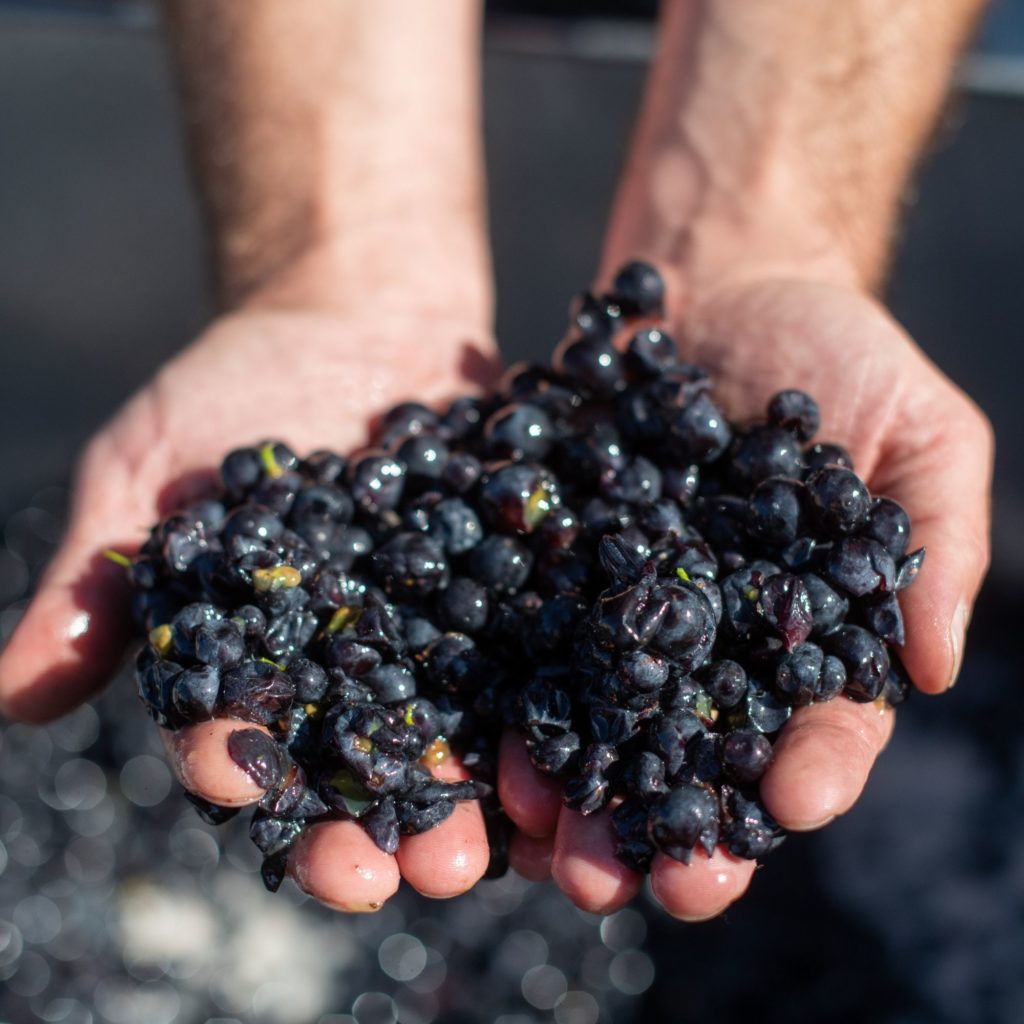
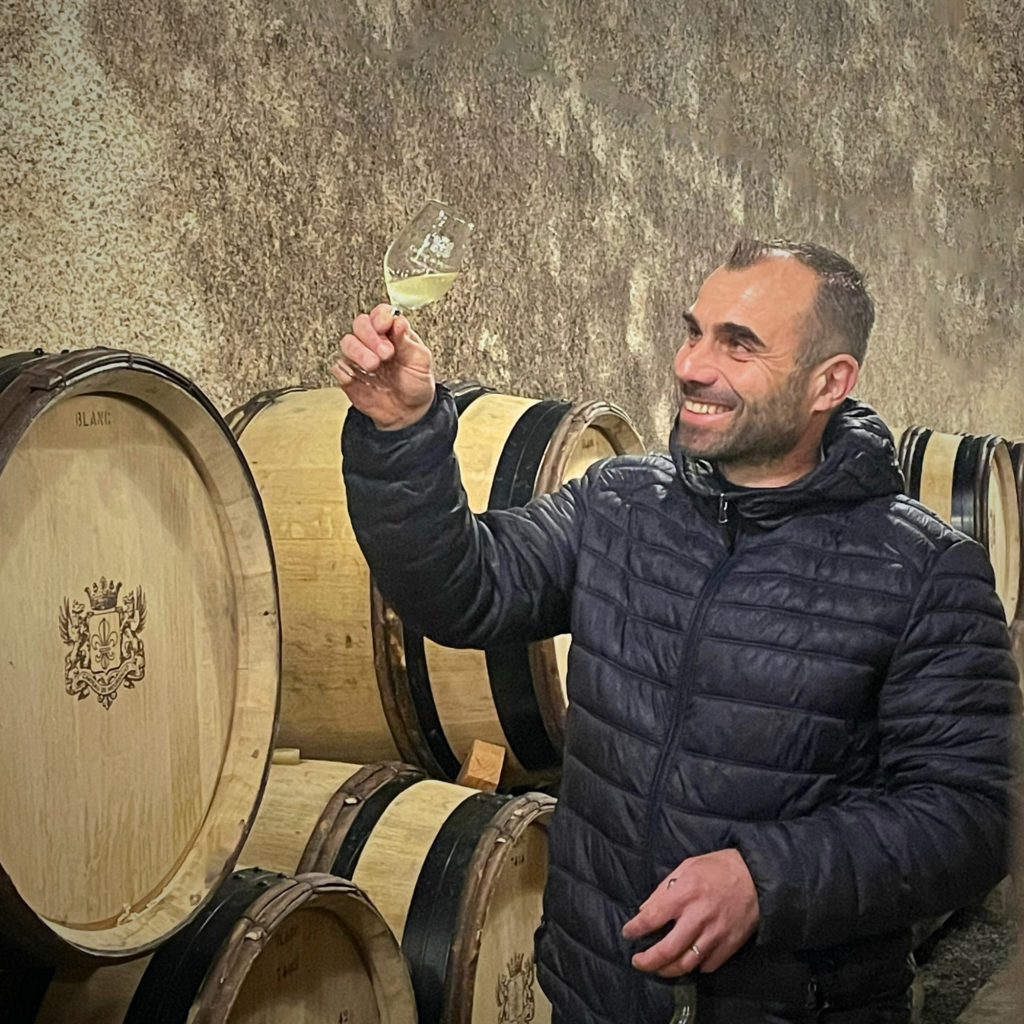
15. Domaine Laroche – Chablis
Domaine Laroche is one of the historic pillars of the Chablis vineyard. Founded in the 9th century in the former monastery of the Obédiencerie, it combines architectural heritage and winemaking excellence. This 90-hectare estate exclusively cultivates Chardonnay on the region’s famous Kimmeridgian soils, which give the wines their typical minerality. Visitors discover a unique atmosphere in the heart of Chablis, with a guided tour of the medieval cellars, modern wine stores and, weather permitting, even the vineyards. The tasting highlights iconic wines such as Chablis Premier Cru Vaudevey and Grand Cru Les Blanchots, all carefully vinified without excessive oak to preserve the purity of the fruit. The estate is also committed to converting to organic farming. Visits are available in several languages, including English, and must be booked in advance. This is an essential stop to understand the unique character of Chablis in Burgundy, with its freshness, precision, and monastic history.
16. Domaine Michel Lafarge – Volnay
Domaine Michel Lafarge is one of the pioneers of biodynamic viticulture in Burgundy. Located in Volnay, this family estate covers around 12 hectares and is distinguished by the precision of its Pinot Noir and the purity of its Chardonnay from Meursault. Run by Frédéric Lafarge and his wife Chantal, the estate focuses on meticulous vineyard work, low yields, and natural winemaking, without added yeasts or systematic filtration. The estate’s wines are highly sought after for their finesse, structure, and aging potential. Visits are rare, by appointment only, and take place in a sober and studious atmosphere. The welcome, often reserved for connoisseurs, includes a detailed presentation of biodynamic practices and a tasting of emblematic single-vineyard wines such as Volnay Clos des Chênes and Beaune Grèves. The cellar, modest but steeped in history, reflects the estate’s philosophy: discretion, consistency, and excellence. For lovers of authentic wines, this is a hidden gem where each bottle sincerely expresses the terroir.
17. Domaine Olivier Leflaive – Puligny-Montrachet
The Domaine Olivier Leflaive, located in Puligny-Montrachet, offers a complete and accessible wine tourism experience, ideal for lovers of great Chardonnay. Olivier Leflaive, former co-director of the Leflaive family estate, created his own business in 1984, combining viticulture, high-end wine trading, and hospitality. Today, the estate cultivates around 17 hectares and also offers wines made from grapes purchased from partner winegrowers. What sets Olivier Leflaive apart is its combined tour offering: a walk through the vineyards, an explanation of the climates, a meal with wine pairings, and accommodation in a charming guest house. The tastings cover a representative range, including prestigious appellations such as Meursault, Chassagne-Montrachet, and Corton-Charlemagne. The staff is trained to welcome all types of visitors, from novices to connoisseurs, and the tours are educational without being elitist. The estate is open almost all year round, with reservations strongly recommended. It offers a friendly immersion in the world of great Burgundy whites, in a refined and professional setting, with a genuine sense of hospitality.
18. Domaine Rocault – Orches (Hautes Côtes de Beaune)
Nestled at the foot of the Orches cliffs in the Hautes Côtes de Beaune, Domaine Rocault offers an authentic immersion in rural Burgundy. This family-run, small-scale estate cultivates around 10 hectares of vines using sustainable farming methods, producing expressive and accessible Pinot Noir and Chardonnay wines. The spectacular natural environment, with its limestone cliffs, adds a rare scenic dimension to the visitor experience. The estate prides itself on a warm welcome, often by the winemakers themselves, with a tour of the vineyards, the winery, and the underground cellars. Tastings are simple, warm, and passionately guided. They allow visitors to discover wines such as Bourgogne Hautes-Côtes de Beaune red, white, and even crémants produced on site. The approach is transparent: no sales pitch, just a sincere sharing of the winemaker’s craft. This estate is ideal for those who want to get off the beaten track and meet true wine artisans. Open by appointment, it is aimed at visitors in search of nature, authenticity, and honest wines.
19. Domaine Trapet Père & Fils – Gevrey-Chambertin
In Gevrey-Chambertin, Domaine Trapet Père & Fils embodies a form of refined classicism.
This 15-hectare family estate has been cultivated biodynamically for over 25 years under the direction of Jean-Louis Trapet. The estate produces wines of great depth, from prestigious climats such as Chapelle-Chambertin, Latricières-Chambertin and Gevrey-Chambertin Ostrea. Visits are often led by Jean-Louis or his family and take place in a peaceful and respectful setting, far from mass tourism. The welcome is understated, focused on listening and sharing. The tasting highlights the finesse of the tannins, the energy of the fruit, and the balance of the wines. The cellar, without ostentation, reflects the estate’s philosophy: to let the wine and the terroir speak for themselves, without artifice. Each cuvée is the result of precision work, a choice of non-intervention whenever possible, and patience. The experience is rare and precious, reserved for those who take the time to immerse themselves in the world of living wine. Reservations are essential, especially during the harvest and aging periods.
20. Maison Joseph Drouhin – Beaune
Maison Joseph Drouhin is an institution in Beaune. Founded in 1880, this independent family business has successfully combined tradition and innovation while remaining true to its ethics: respect for the terroir, organic farming, and precise winemaking. The estate covers 80 hectares, most of which are in the Côte de Beaune and Côte de Nuits, with prestigious plots such as Clos des Mouches, Beaune Grèves, Clos de Vougeot and Montrachet. The estate’s historic cellars, located beneath the streets of Beaune, date back to the 13th century and were once occupied by the canons of Notre-Dame. The guided tour allows visitors to explore this incredible underground labyrinth, with its Gothic vaults and thousands of aging bottles. The tasting at the end of the tour includes several vintages representative of the Drouhin style: finesse, purity, and precision. The staff offers explanations tailored to all audiences, with a highly appreciated educational approach. The welcome is professional and smooth, and reservations are strongly recommended. This is an essential stop to understand the balance between history, innovation, and excellence in Burgundy wine.
XperienceFrance is your travel specialist in France.
